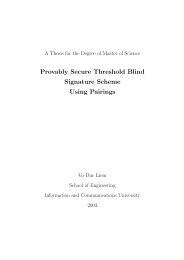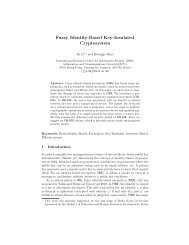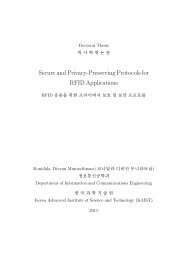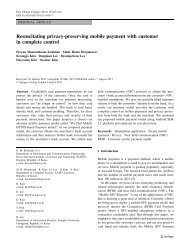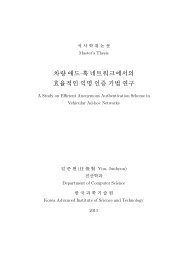RFID-enabled Extensible Authentication Framework and Its ...
RFID-enabled Extensible Authentication Framework and Its ...
RFID-enabled Extensible Authentication Framework and Its ...
Create successful ePaper yourself
Turn your PDF publications into a flip-book with our unique Google optimized e-Paper software.
= Identity is jointly used. M sends Type[k]-Request where k ∈<br />
{0, 4 : 255}, k = i, <strong>and</strong> k = j. If M has received Nak message,<br />
k ∈ T ypeSet <strong>and</strong> k = j.<br />
(7) T sends corresponding Type[k]-Response to (6). Depending on the<br />
Type[k], (6)-(7) is more than one round trip.<br />
(8) If authentication fails in the middle of authentication, M sends<br />
Failure-Notification immediately. If authentication ends suc-<br />
cessfully, M sends Success-Notification.<br />
In a session, if T receives Type[l]-Request with the same identifier<br />
before finishing Type[j] or Type[k] authentication, T drops the received<br />
Type[l]-Request, where l = j <strong>and</strong> l = k.<br />
Beacuse REAF supports bulk-reading using identifier <strong>and</strong> the<br />
timer, it is suitable for <strong>RFID</strong> applications. Also, REAF packet format<br />
is designed as compact as possible to support resource-constraint <strong>RFID</strong><br />
tags. As a result, REAF can support multiple authentication methods<br />
only with 4-byte overhead.<br />
25



